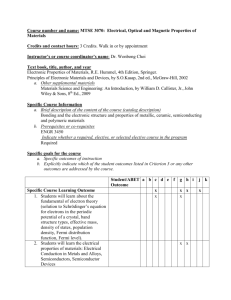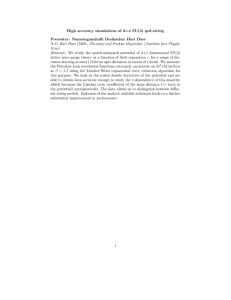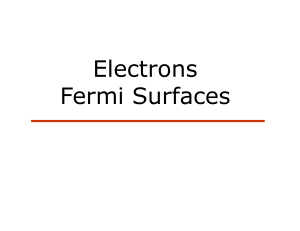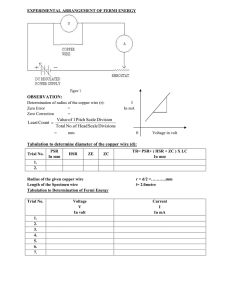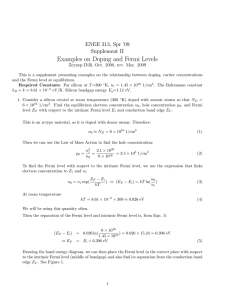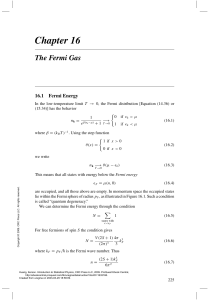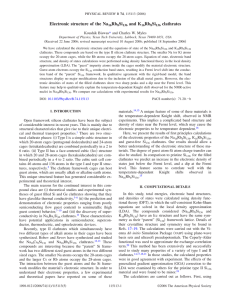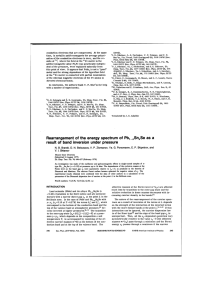1 8.511 Theory of Solids I
advertisement
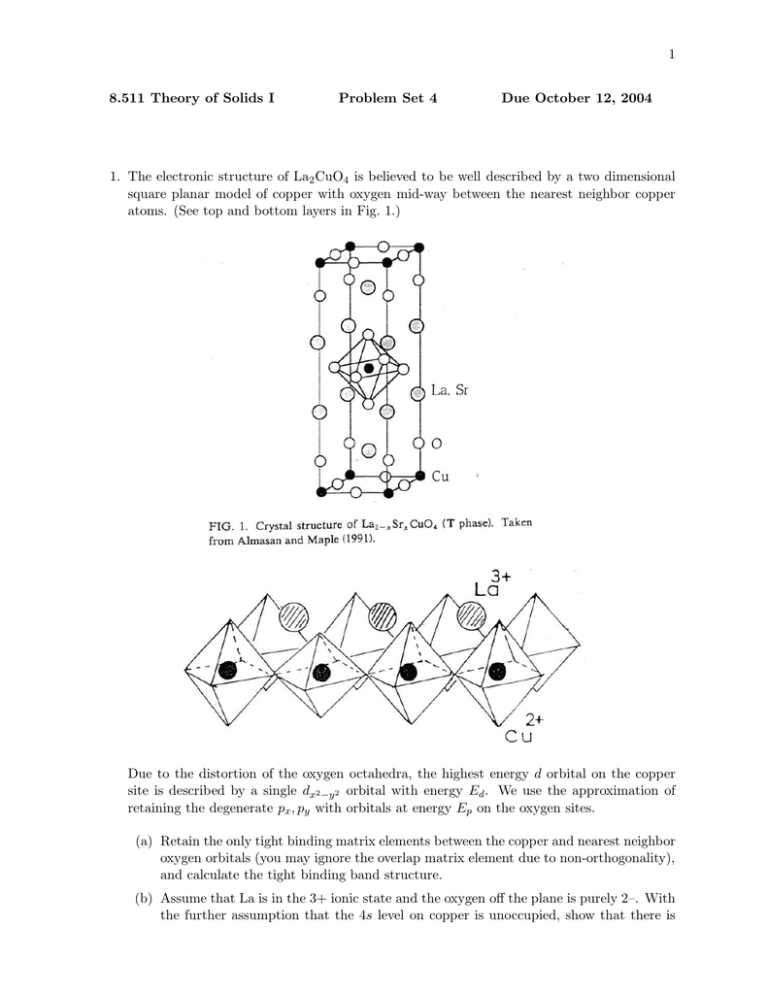
1 8.511 Theory of Solids I Problem Set 4 Due October 12, 2004 1. The electronic structure of La2 CuO4 is believed to be well described by a two dimensional square planar model of copper with oxygen mid-way between the nearest neighbor copper atoms. (See top and bottom layers in Fig. 1.) Due to the distortion of the oxygen octahedra, the highest energy d orbital on the copper site is described by a single dx2 −y2 orbital with energy Ed . We use the approximation of retaining the degenerate px , py with orbitals at energy Ep on the oxygen sites. (a) Retain the only tight binding matrix elements between the copper and nearest neighbor oxygen orbitals (you may ignore the overlap matrix element due to non-orthogonality), and calculate the tight binding band structure. (b) Assume that La is in the 3+ ionic state and the oxygen off the plane is purely 2–. With the further assumption that the 4s level on copper is unoccupied, show that there is 2 one hole per unit cell in the d, p, orbitals that we kept. Locate the Fermi level in your band structure. Determine the Fermi surface. (c) Locate the saddle points on the Fermi surface and show that the density of states is logarithmically divergent at energy near the Fermi energy. (d) Sketch the Fermi surface when 15% of the La3+ is replaced by Sr2+ . This is called hole doping. For a determination of the Fermi surface using angular resolved photoemission, see Yoshida et al., Phys. Rev. B 63, 220501 (2001). (e) L. Mattheiss [Phys. Rev. Lett. 58, 1028 (1987)] has computed the band structure using a modified APW method. He claims that the band structure is well fitted by a tight binding model with Ep = Ed and a matrix element of –1.85 eV. Check this claim. Note that Mattheiss takes into account interlayer coupling which leads in � to dispersion � the c direction. Consequently we can identify his X and S with our πa , πa and Γ and Z with our (0,0).



